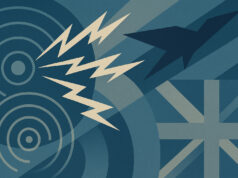The UK’s emergency response committee only convenes to handle potentially disruptive or significant matters. This makes the decision to hold a COBR meeting reserved to a few events of national relevance.
When a major crisis hits the UK or involves British nationals abroad, the news may soon report that the Government will hold a ‘COBRA’ or ‘COBR’ meeting. The Cobra meetings are named after ‘Cabinet Office Briefing Room A’ or simply ‘Cabinet Office Briefing Room’ as the committee has several sites where emergency meetings may take place. However, it is presumed that some rooms are located at 70 Whitehall, ‘just behind 10 Downing Street’ and that ‘Briefing Room A’ is where most of the meetings occur. This use of Room A is one of the reasons that make the acronym ‘Cobra’ or ‘COBRA’ widely used.
The primary purpose of COBR is to co-ordinate and discuss the actions of the departments within Her Majesty’s Government in response to matters of national, regional or international significance with considerable consequences for the UK. In short, COBR is Britain’s emergency response committee.
The Prime Minister generally chairs Cobra, and the committee’s composition depends on the nature of the emergency. As one of the most important ministerial meetings, it also counts with senior ministers, security and intelligence officials and military chiefs. Other key ministers and mayors, representatives of external organisations such as the Local Government Association (LGA) and the Association of Chief Police Officers might also be present according to the circumstances.
A COBR meeting was first convened in the early 1970s to prepare the Conservative Edward Heath government’s response to the 1972 miners’ strike. It was also set up for handling the potential outbreak of war with the Warsaw Pact. Other relevant events that have led to Cobra meetings being held include the 1980 Iranian Embassy siege, the fuel protests and the mass flooding of 2000, the foot-and-mouth outbreak in 2001, the 11 September 2001 Attacks and the impending strike by fire-fighters in 2002.
During Tony Blair’s premiership from 1997 to 2007, the Briefing Rooms were widely used with COBR meetings being convened more than ever. After the crises faced during the 2000-2002 period, the Government sought a new legal framework and more powers to “enable authorities to deploy armed services, ban public assembly, improve travel restrictions, and to prevent public access to sensitive areas”. According to the Government, this would mean better plans to handle national emergencies.
The Civil Contingencies Act 2004 (c 36) is the legislation that replaced the former Civil Defence and Emergency Powers. In theory, its purpose is to establish a more coherent framework for emergency planning to the British Government in times of need. However, some critics described the Act as “totalitarian” and a pathway “to turn Britain into a dictatorship overnight”.
Since before the Act received Royal Assent, the Cobra committee could invoke emergency powers. But from 2004 onwards it can decide whether to invoke the new powers that are present in the Civil Contingencies Act. These powers include setting up special courts, requisitioning property and restricting movement of people in times of a severe emergency.
Beyond the already mentioned events that resulted in the gathering of COBR there are others such as the 7 July 2005 London bombings, the airstrikes on Libya and the evacuation of Britons, the refugee crisis in Calais of 2015, the Paris and Brussels terrorist attacks, the attack outside the Houses of Parliament and the 2017 Manchester Arena terrorist explosion. In March and July 2018, COBR committees were held to manage a cross-departmental response against the Salisbury nerve agent attack and Amesbury poisoning.
COBR is Britain’s most important crisis management committee. As said, it generally gathers the Prime Minister, senior ministers from major departments, representatives of the Security Service, senior officers of the Armed Forces, Civil Servants, etc.
There is a single official publicly available photograph of one COBR facility; it was released in 2010 under the Freedom of Information Act request. The secrecy of COBR’s locations is a way to understand that it is no ordinary meeting.
Therefore, when the Government announces that it has decided to summon a COBR meeting it is willing to transmit a relevant message. It means that some issue of urgent national significance is about to happen or is underway and that the British Government has initiated its response.














I believe most take place at the DCMC, via tunnel from Downing Street / Cabinet office and its just over the road.
Others may be in the Cabinet Office, as said, in what was briefing room A.
Can’t say it looks that impressive.
It won’t do, they won’t be showing outsiders much. This is just a briefing room. It is the IT and comms that links COBRA to elsewhere and where COBRA is located that is most sensitive.
Just expanding on my linking COBRA with DCMC, in case folk are wondering.
That was suggested by a well known and respected researcher from Sub Brit, which studies Cold War infrastructure, especially underground. I can supply a link if anyone’s interested.
It is out there on the internet, publically available, open source.
As for DCMC, I have a book called “Last Days” a collection of photos taken inside DCMC by a photographer who was given unique access, vetted, and could only show simple things like this, a photo of a briefing table, VTC / CCTV screens, a kettle, a bed.
Considering the hundreds and hundreds of millions that were spent on communications and IT infrastructure alone in the late 80s early 90s, cost overruns which caused questions in Parliament and which HMG hid amongst other expenditure, DCMC, and by definition COBRA, are more than just briefing rooms.
As an example, the NOTC – Nuclear Operations and Targeting Centre, is believed to be within DCMC. This links to Northwood and CTF 345.
Again open source info, and a written record of questions in Parliament available on Hansard.
That Cobra uses it is speculation, but reasonable given the close location of the Cabinet Office and the MoD.
I also suggest that fixed infrastructure like this are of equal importance to “Defence” than merely how many ships planes tanks and regiments, and don’t get much attention when we discuss all things UK defence. Corsham and Wyton are other examples of state of the art infrastructure that get little publicity, and I enjoyed reading an article about this subject on UKDJ.
It looks like a dull meeting room like any across Government ready to dole out death by PowerPoint. The most worrying aspect is the multiple screens giving a confusing and distracting picture.
I take your point that the clever part is the ability to pull information from wherever and it is perhaps a good thing that COBR could be anywhere. I just wish that the environment looked more conducive to thoughtful and sensible decision making.
Is that the UNITER bunker Cam? Big rectangular thing on the surface, not underground.
That doesn’t look like the COBRA meeting room in the tv series COBRA. lol
Worked in the cabinet office on rebuilding and when there was a Cobra, the order went out, ‘total silence on site’. The only secret I can share is that Larry the PM’s cat, used to doss in our office instead of catching mice.
I think this secret that you have let slip will crumble the government and the very nature of our democracy. No one will be able to believe this!